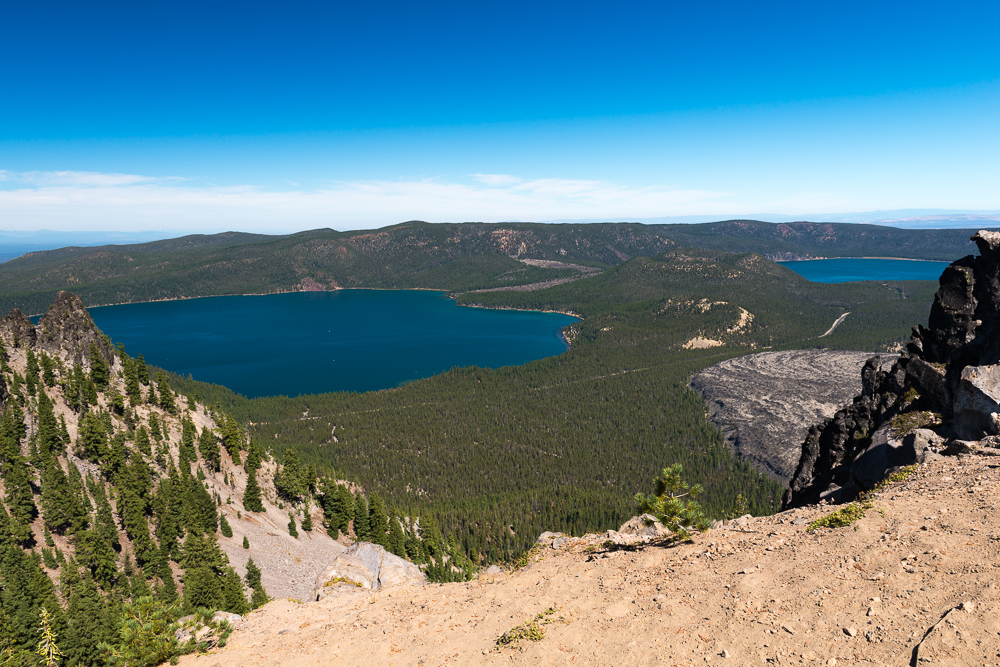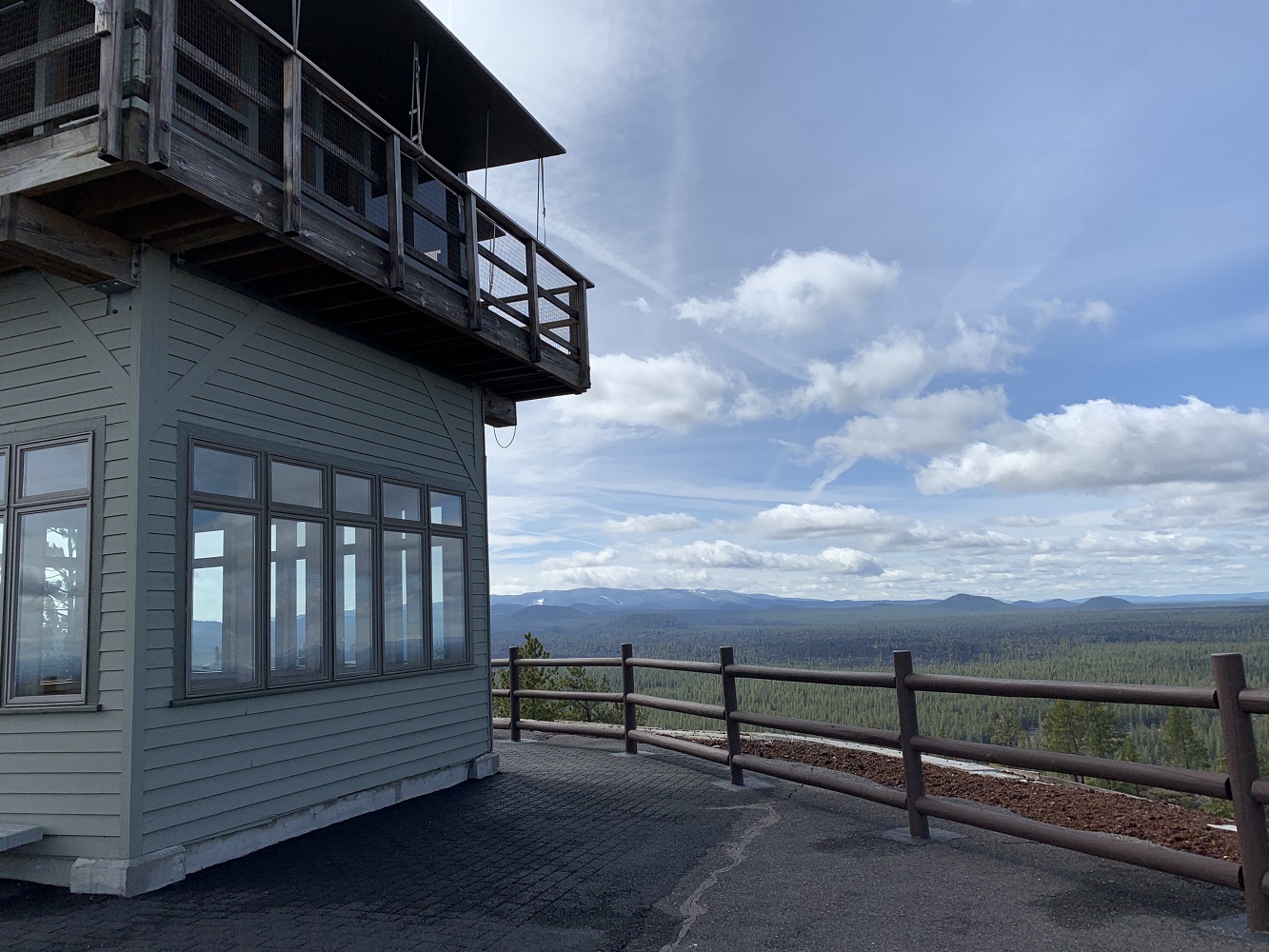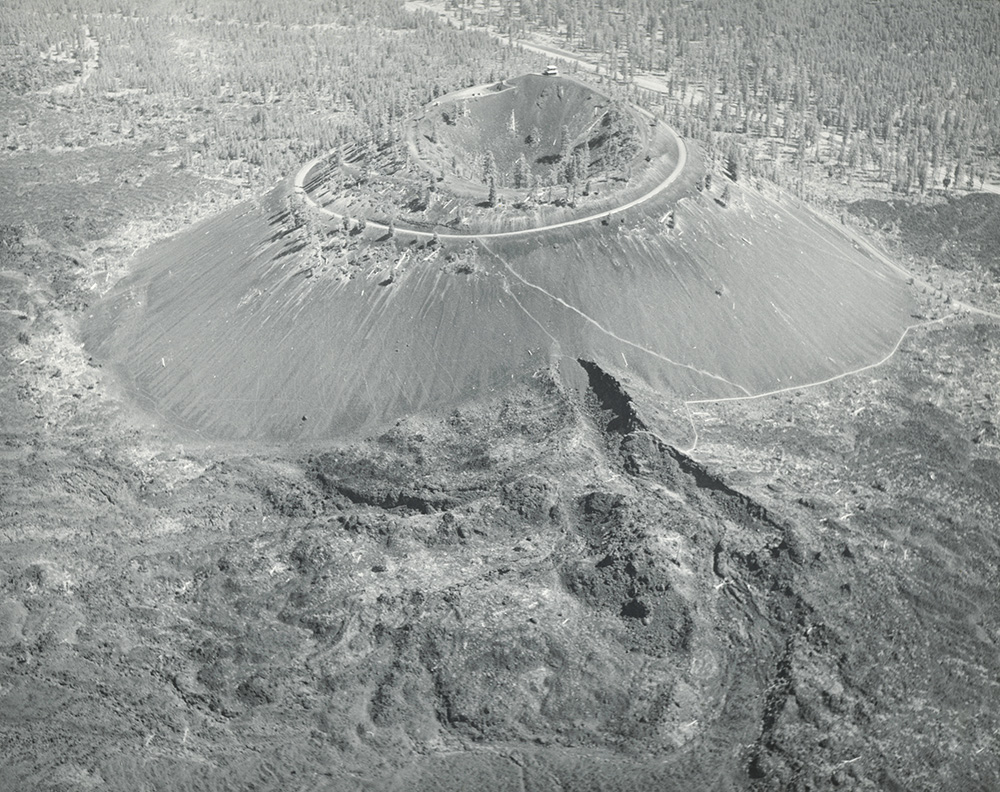Overview
 Newberry National Volcanic Monument is home to Paulina Lake and East Lake. Each offers recreational opportunities for anglers, picknickers, hikers and campers. (Oregon State Archives scenic photo)
Newberry National Volcanic Monument is home to Paulina Lake and East Lake. Each offers recreational opportunities for anglers, picknickers, hikers and campers. (Oregon State Archives scenic photo) Newberry National Volcanic Monument is in Deschutes County near Bend in central Oregon, 40 miles east of the Cascade Range crest. The monument boundary includes 54,822 acres of lava flows, cinder cones, and lakes between the Deschutes River and Newberry Volcano. Congress designated the unique volcanic landscape in the Deschutes National Forest as a national monument in 1990, to preserve and protect Newberry’s remarkable geologic landforms, plant and animal communities, scenery, and opportunities for recreation.
Managed by the Deschutes National Forest, Newberry National Volcanic Monument provides visitors with opportunities to explore an active volcano and wander through part of the vast lava lands of central Oregon. High ground located atop volcanic vents offer stunning panoramic views of the Cascade Range, the High Desert, and Newberry Volcano itself. The Lava Lands visitor center at Lava Butte showcases and explains the features that make Newberry National Volcanic Monument unique. Over sixty miles of hiking trails wind through the monument, ranging from short roadside interpretive paths to the 21-mile Crater Rim trail.
Newberry Volcano
The central focus of the monument is Newberry Volcano, named in honor of Dr. John S. Newberry, a naturalist attached to a mid-19th century U.S. Army expeditionary force. Newberry Volcano is a broad shield of basaltic lava flows, with early activity dating back about 400,000 years. It is the largest volcano in the Cascade Range. The main volcano covers an area of 500 square miles. More far-reaching lava flows expand the volcanic footprint to 1,150 square miles. Newberry Volcano rises about 0.5 miles above the surrounding terrain and encompasses a 4- by 5-mile-wide summit caldera. Paulina Peak, at an elevation of 7,984 feet, is the highest point on the caldera rim; it formed as a rhyolite lava flow about 83,000 years ago. Between 300,000 and 75,000 years ago, major explosive eruptions at Newberry Volcano generated several large, hot flows of ash and rock. Subsequent collapse of eruptive vents such as the one for Newberry produced the modern summit caldera, whose crest was from 500 to 1,000 feet higher than present-day Paulina Peak.
 The fire tower and overlook at Lava Butte in the Newberry National Volcanic Monument offers a spectacular view of the monument and the Cascade Range.
The fire tower and overlook at Lava Butte in the Newberry National Volcanic Monument offers a spectacular view of the monument and the Cascade Range.
(Oregon State Archives scenic photo)
The most recent volcanic activity at Newberry Volcano is concentrated within the summit caldera and along its northwest rift zone, reaching from the volcano summit northwest to the Deschutes River. More than 400 cinder cones, spatter cones, fissure vents, and lava flows dot the flanks of Newberry Volcano and the northwest rift zone. These volcanoes grew and died in the last 12,000 years, with at least 12 lava flows erupting within the northwest rift zone as late as 7,000 years ago. The largest of these lava flows came from Lava Butte along U.S. Highway 97. As this lava flowed downslope to the Deschutes River, it pushed the river channel west to its present location. The floor of Newberry caldera is filled with many volcanic features erupted in the last 7,700 years, including obsidian lava flows and tuff or pumice cones. The youngest lava within the national monument is the Big Obsidian Flow, which was erupted within the caldera about 1,300 years ago. The caldera itself is partially filled by Paulina and East lakes; features separated from one another by the Central Pumice Cone.
 Lava Butte, a prime geologic attraction in Oregon, is located along U.S. Highway 97, 10 miles south of Bend. DOGAMI Image from the Ore Bin v. 31, no. 4, Peterson and Groh (1969).
Lava Butte, a prime geologic attraction in Oregon, is located along U.S. Highway 97, 10 miles south of Bend. DOGAMI Image from the Ore Bin v. 31, no. 4, Peterson and Groh (1969).
Next: John Day Fossil Beds National Monument >